The Egyptian Football Association announced the appointment of Rui Vitória as the new coach of the Egyptian national team on July 12, 2022, after the team lost by four goals to one against South Korea and by two goals to nil to Ethiopia in the second Africa Cup Of Nations qualification match.
The Egyptian national team played
nine matches under Rui Vitória’s management, winning all of them except the last friendly match against Tunisia, which they lost by three goals to one.
The Egyptian national team topped Group D in Africa Cup Of Nations qualifications with 15 points from six matches after winning five matches and losing one.
Despite the other teams’ modest levels, the Egyptian team displayed some excellent tactical touches in corner kicks.
The Egyptian team scored three goals from corners in nine matches under the leadership of Rui Vitória (including a goal from a rebound shot), but they are expected to bear fruit soon with time.
Egypt has Mohamed Salah and Ahmed Sayed Zizo, two excellent takers in out-swinging and in-swinging crosses.
Salah is left-footed, and Zizo is right-footed — diverse weapons.
“Set pieces are a game within the game,” Gianni Vio said via The Athletic.
“It is a dead-ball situation, and we decide the taker, we decide how many players to go in the box, we decide the space to attack, and we decide the timing.
It’s completely different.”
“We can speak about different analyses, but it’s the player (the set-piece taker) that makes the difference, 100%,” said Vio.
“If the coach has time to train certain routines, the players will obviously improve, but if you have a Harry Kane in your team, you’re going to score more goals — it’s the same if you had James Ward-Prowse. The taker is the most important player in the set pieces.”
Vio talked about the importance of the takers in corners.
Having Salah and Zizo, or Omar Marmoush if Zizo is benched, is what makes the difference for Egypt in corners because they often have two takers to play a corner, so opponents get confused because they can play an in-swinging or out-swinging cross with the same accuracy from the right or left side and if an opponent defends the box well, they pass a short corner to each other, knowing that they are both excellent, technically, at dribbles, passes and general behaviour with the ball.
In-swinging crosses
In that corner below, the set piece was taken from the right, while Egypt had the opportunity to play an in-swinging or out-swinging cross, having Salah and Zizo as two takers.
Here, the opponent defends with a man-marking defending system, placing only two zonal players on the near post.
Egypt’s idea is to target the far post with an in-swinging cross from Salah to Ahmed Hegazi.
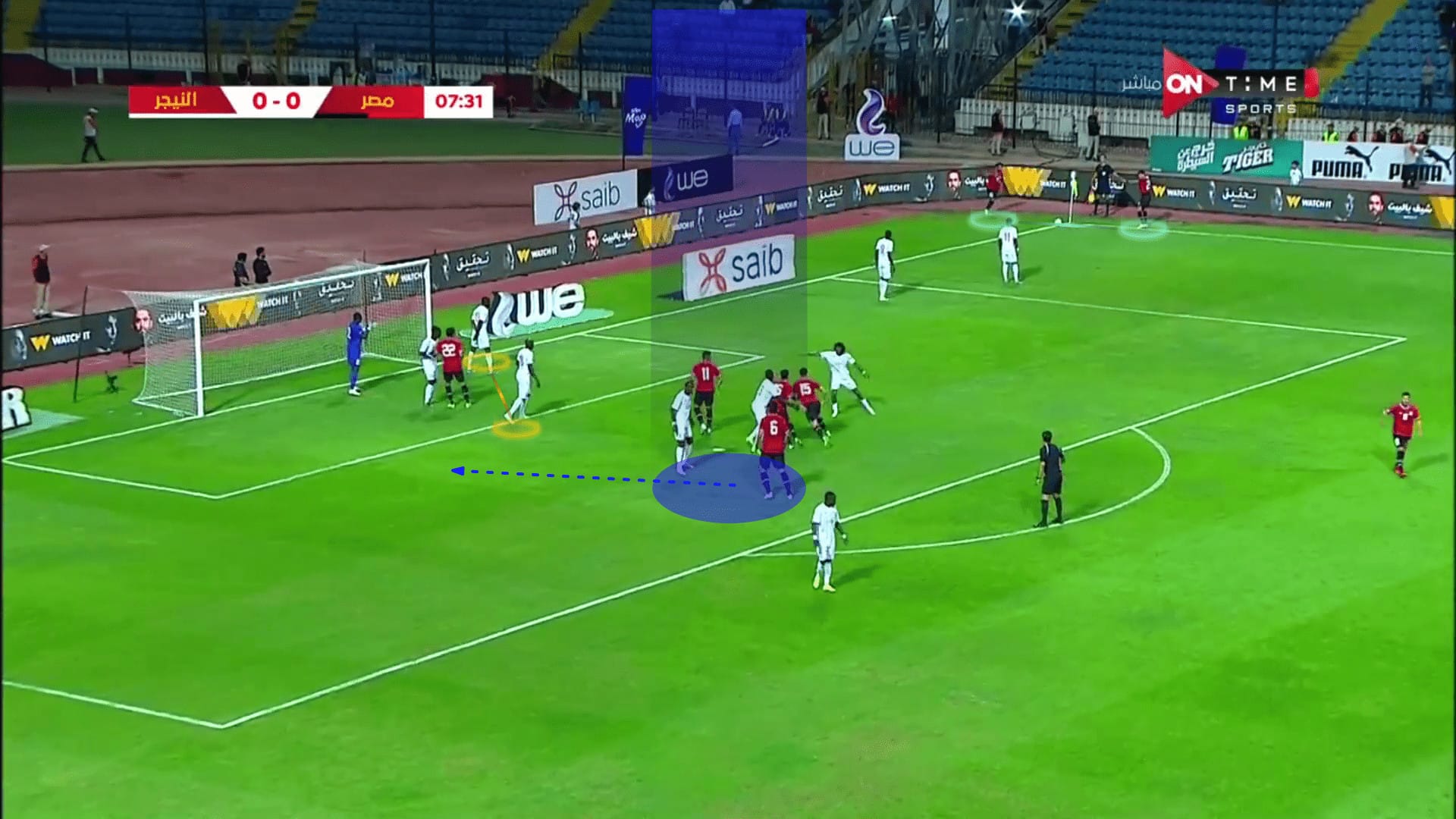
In the first photo below, Hegazi starts in the middle but moves to the far post as Salah touches the ball.
This causes the defender an orientation problem. He turns his body to Hegazi, preventing him from reaching the empty area on the far post.
The defender gives his back to the ball, losing track of it, so he decides to turn his body again to the ball, which we can observe in the second photo.
As a result, he loses communication with Hegazi, who receives the ball freely.
In the third and fourth photos, he tries to pass the ball to his teammate at the far post, but it hits the defender.
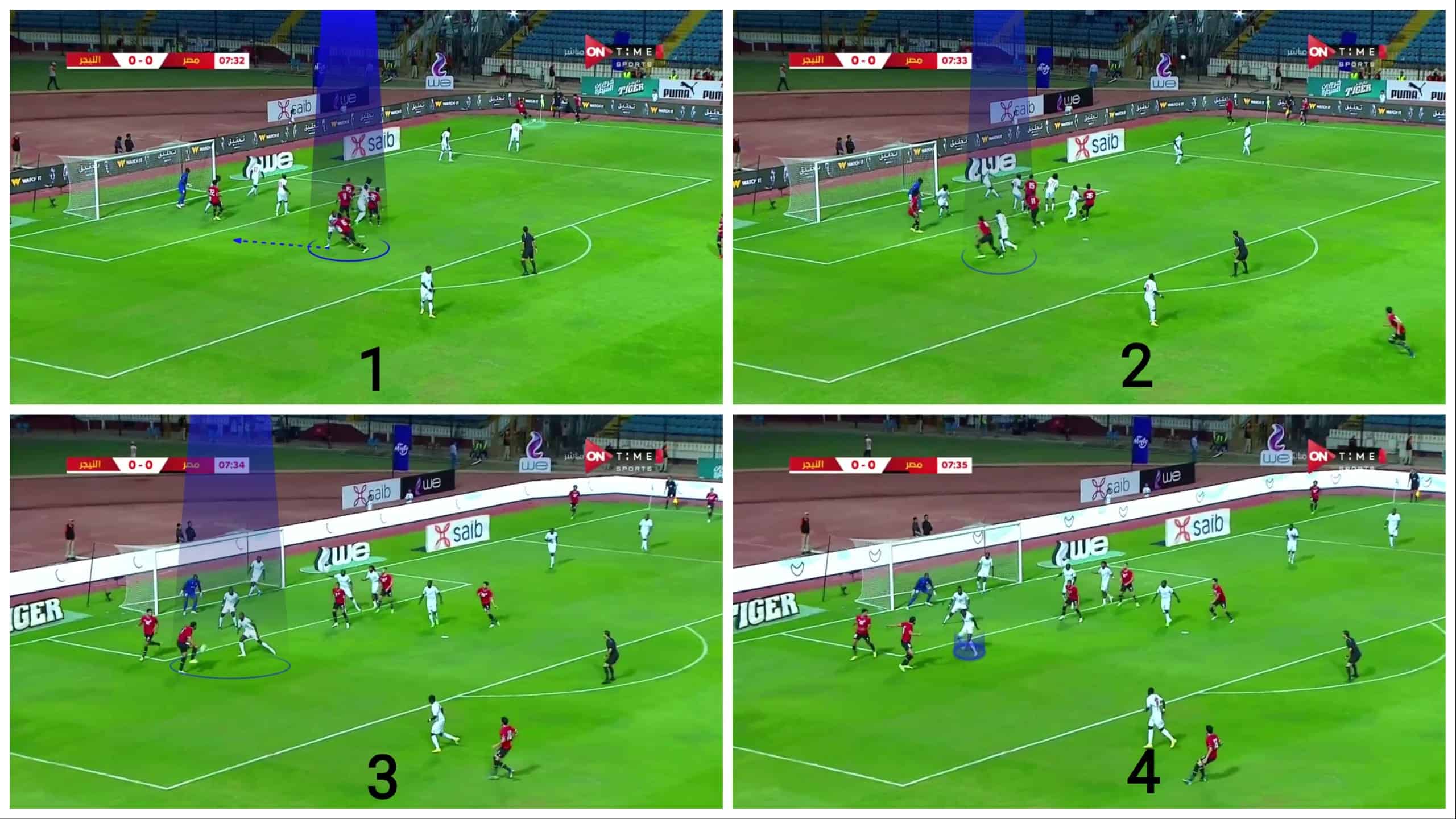
This orientation problem can be solved, as shown below.
It is a similar situation here when the attacker tries to reach the far post from the middle.
Let’s track what the defender did.
This defender starts in a good body orientation, with his body inclined toward the ball, facing his marker, giving his back to the goal.
This helps him to track the ball and the attacker at the same time.
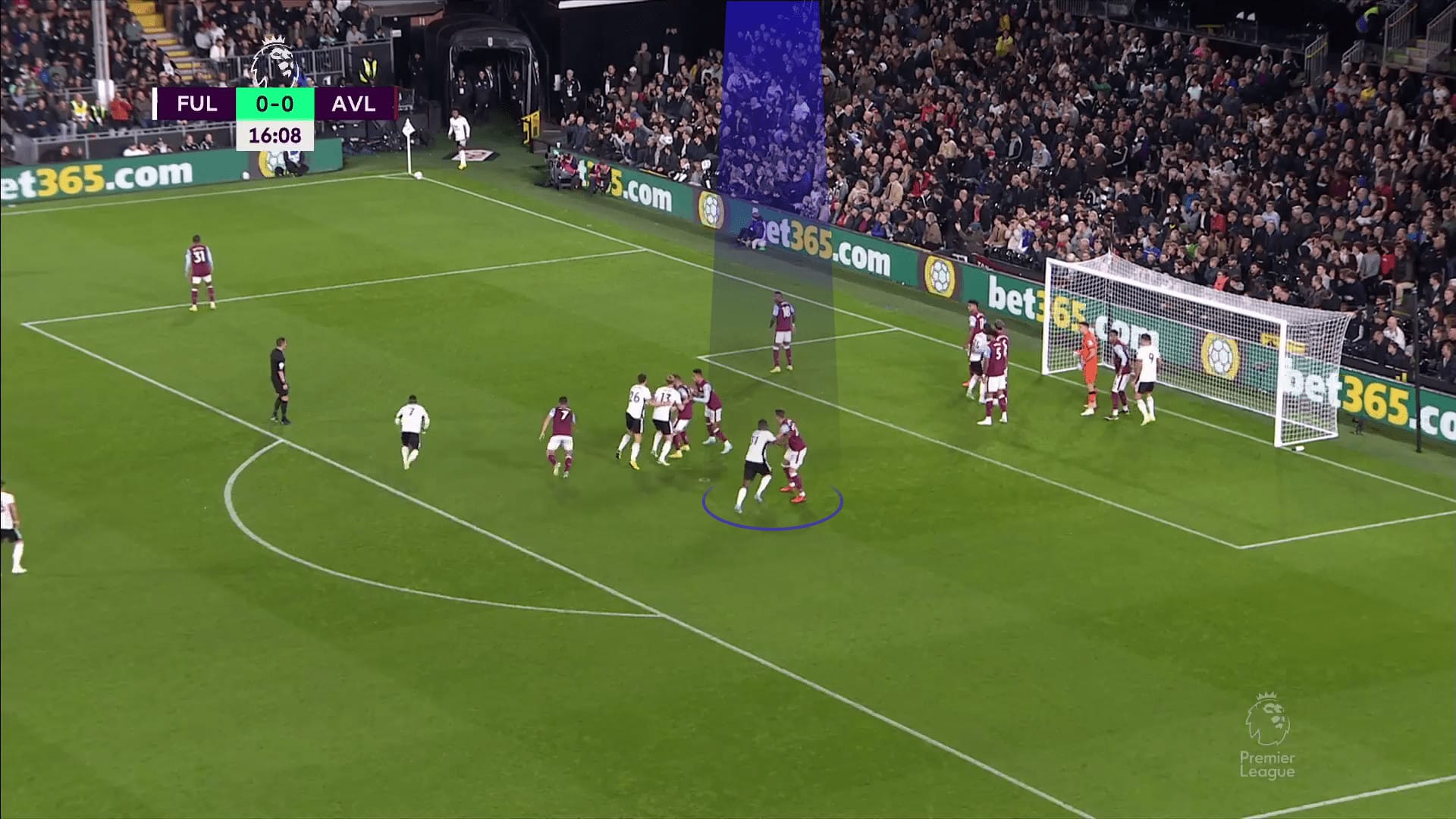
When the cross is played, the attacker tries to move to the far post, but the defender makes it a body conflict, trying to push him, closing the path of running to the far post, his blind side.
This is better than letting him run and then turning around to catch him losing tracking the ball.
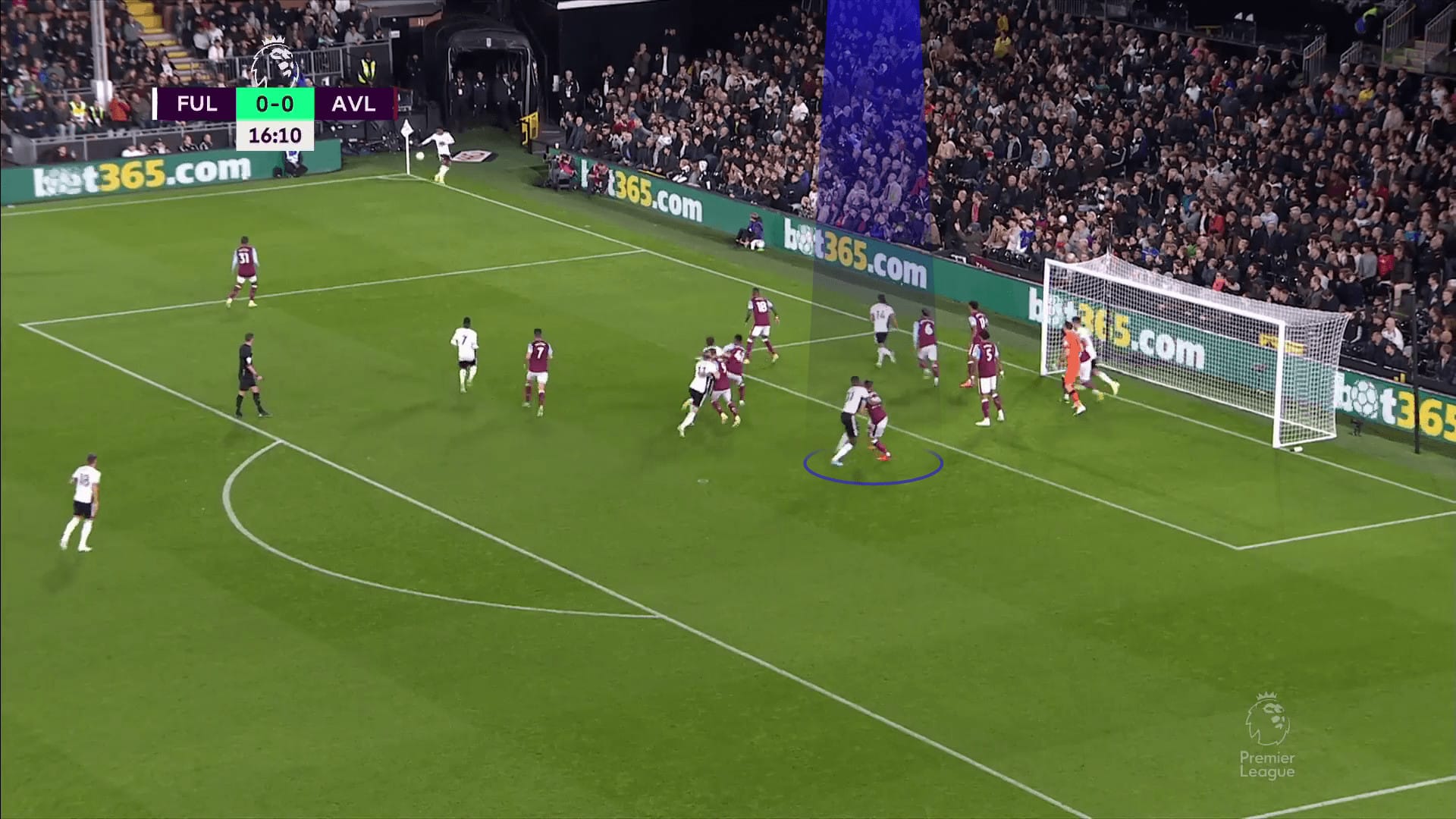
Here, Tunisia
defends in a hybrid system with four players in zonal marking, three man-markers, two against the short corner,and a player in the rebound zone.
Tunisia’s man marker keeps that trick while the Egyptian-highlighted attacker starts in the middle, trying to move to the far post.
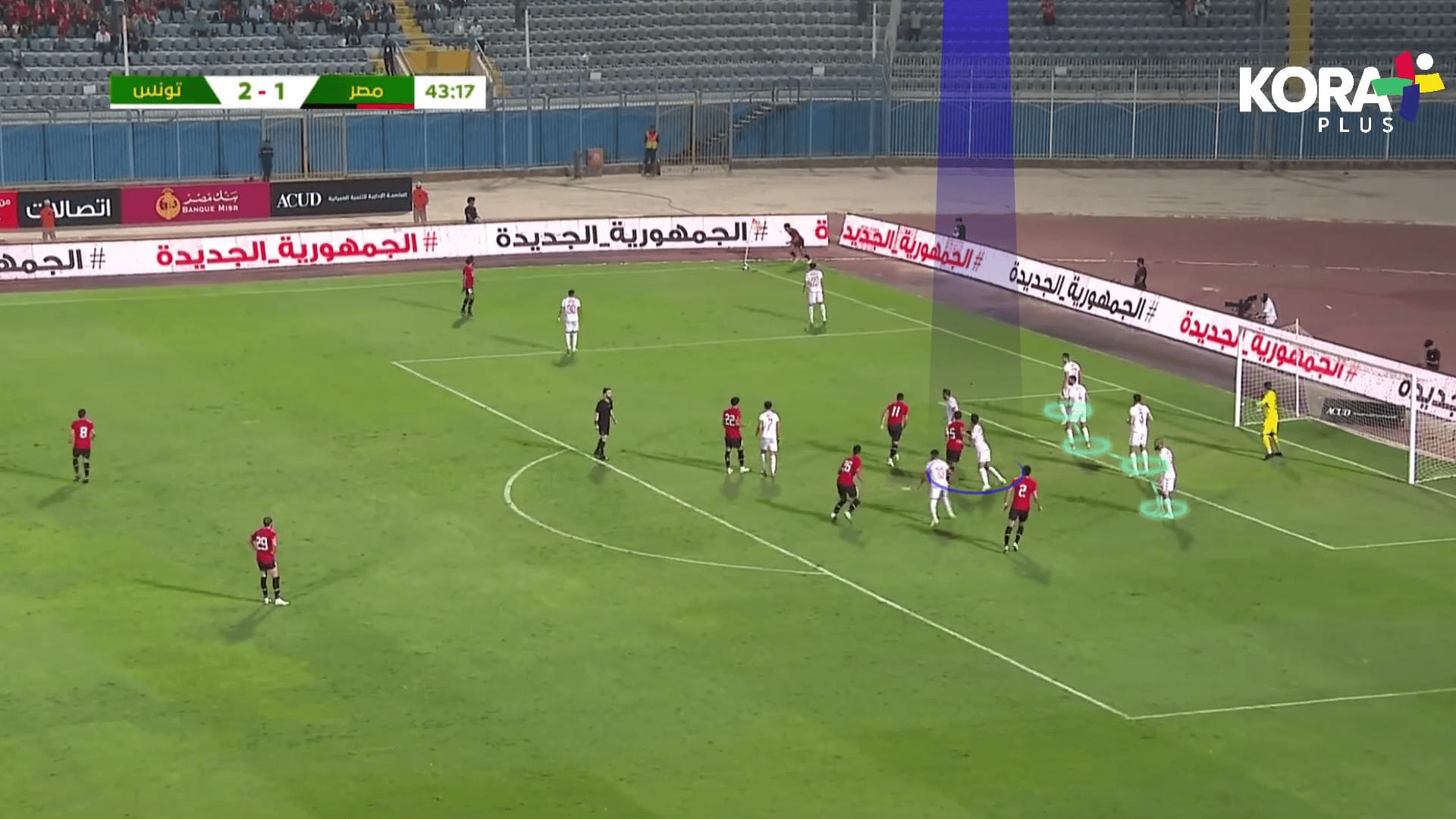
The defender keeps blocking the attacker, preventing him from moving to the far post.
He keeps track of the ball with his eyes and the attacker with his physical touch.
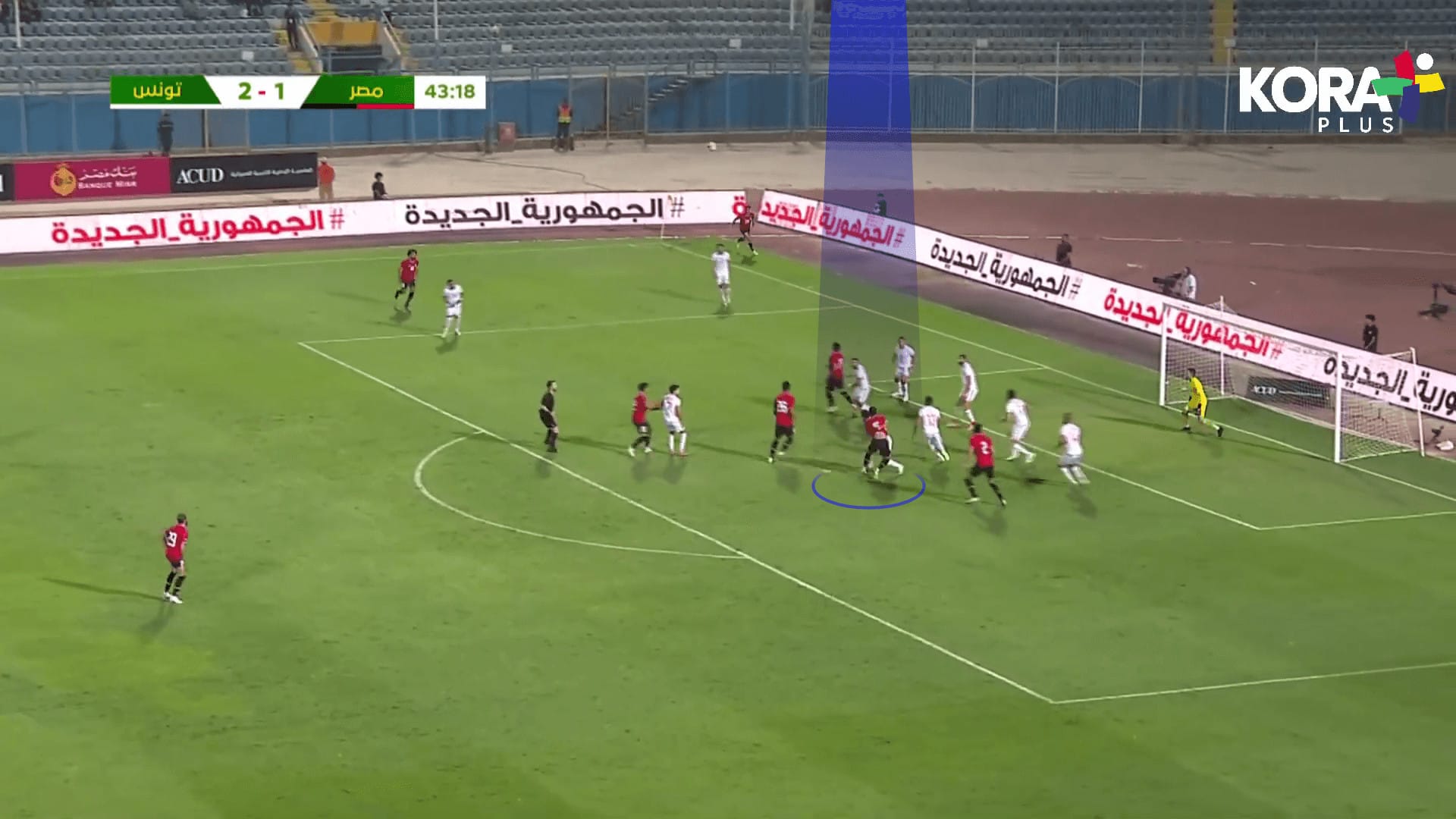
Here, the defender does his best to cling to the attacker, allowing the zonal player to get the ball.
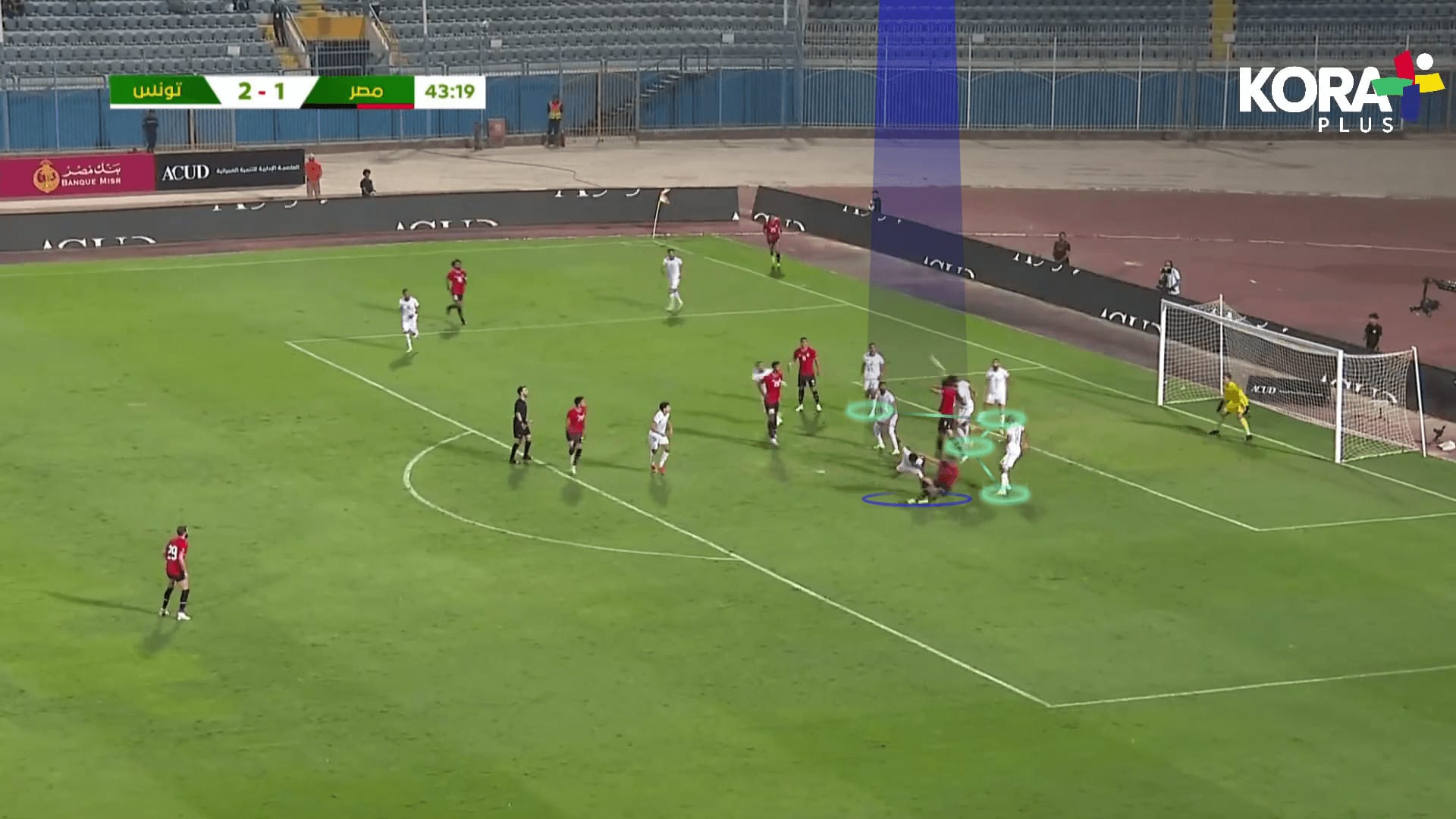
Out-swinging crosses
When Egypt found it more challenging to attack the far post with in-swinging crosses behind the defenders, especially against the hybrid system having zonal defenders on the far post, they had no problem because they could target the far post, but in front of the zonal line by out-swinging crosses and here Zizo’s role becomes.
In the first photo, Tunisia defends with four zonal defenders, three man-markers, two short defenders, and a rebound player, while Egypt’s idea is to make it a 4v3 situation against man-markers to free the blue-highlighted player in front of the zonal line on the far post while the other three move to the near post, dragging the three man-markers.
In the second photo, Zizo’s excellent out-swinging cross reaches the targeted player; there are two takers, but out of the shot.
The headed shot is from a little long distance, so it hits the defender, as shown in the third and fourth photos.
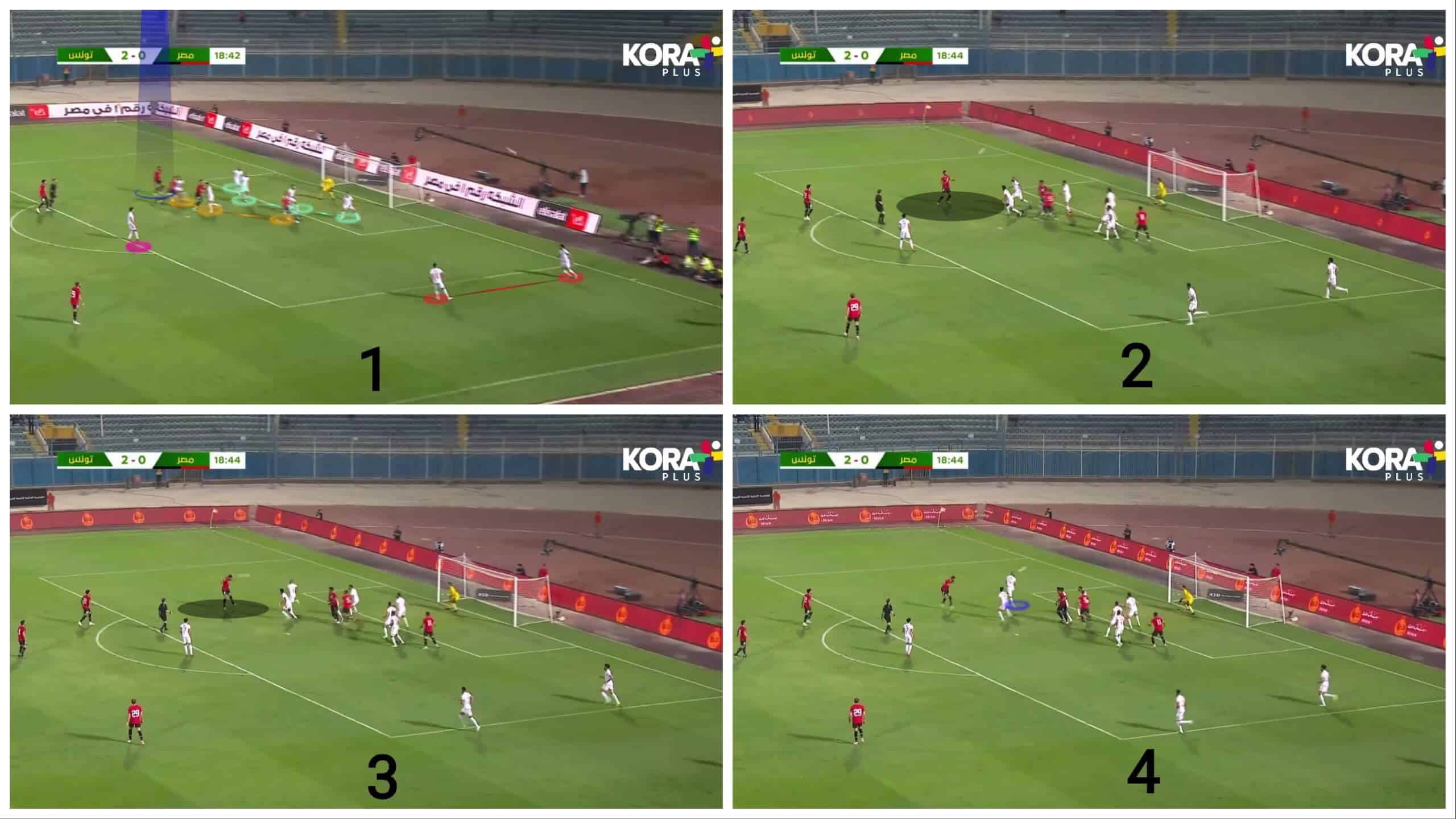
To solve this problem of long distance, we suggest using Man City’s idea below: nodding the ball to the far post while the other attackers frame the goal.
In the first photo, Man City uses a similar idea against RB Leipzig’s four man-markers by targeting Bernardo Silva, who is free coming from the near post while the other four attackers are deloading the targeted area for him, as in the second photo.
In the third photo, five attackers are framing the goal.
Rodri blocks the zonal player in the middle to isolate the three attackers behind him against only the last zonal defender.
Two attackers focus on freeing Erling Haaland behind him, who gets the headed pass, which results in a goal, as in the fourth photo.
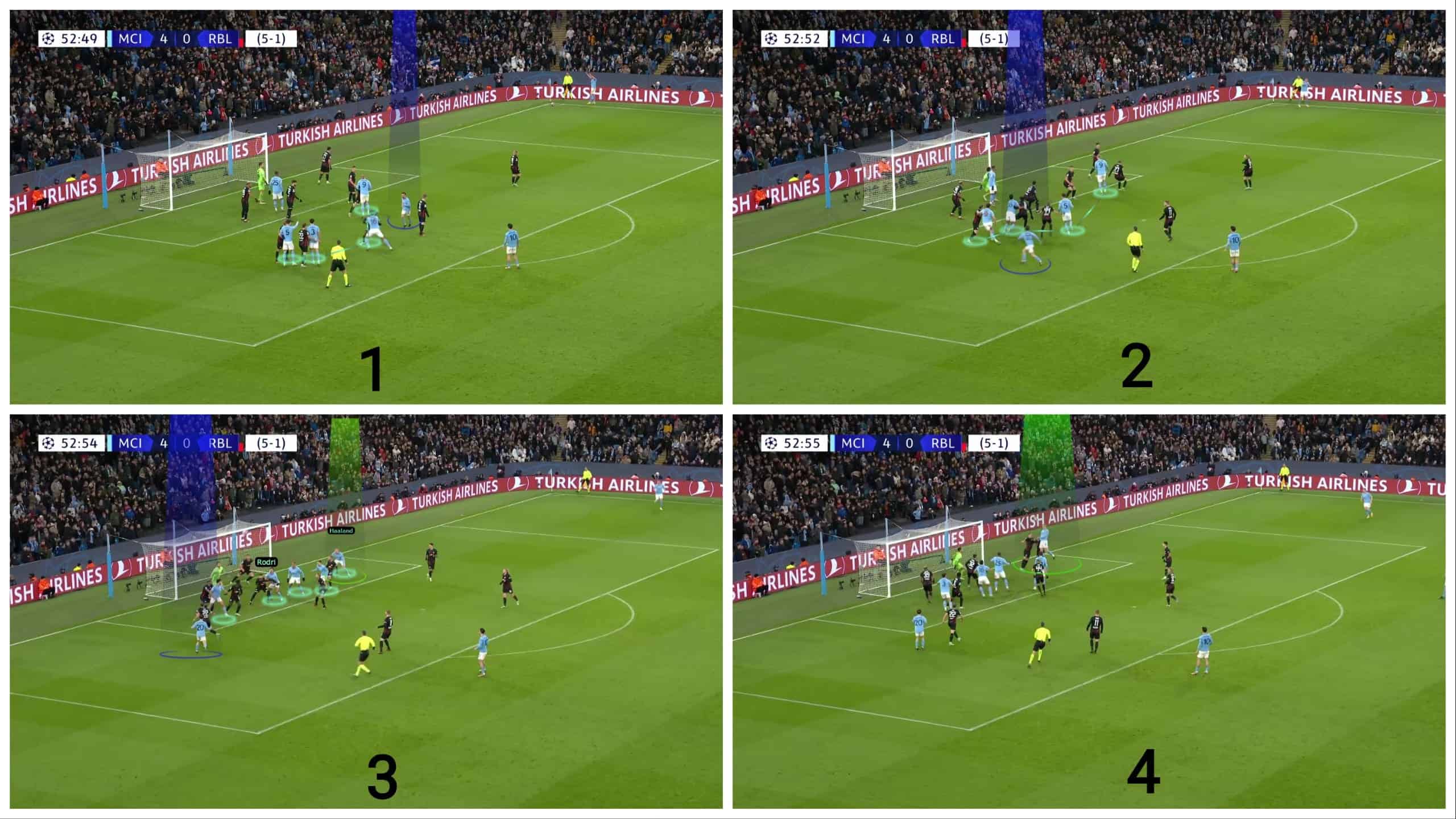
Egypt also uses out-swinging crosses far away from the zonal line around the penalty spot to provide the attacker with the distance to move and jump.
If he is better than his marker in air duels, this shows his ability, which is called a mismatch, as we will explain below.
In the first photo, Salah and Zizo stand as two takers, as usual.
In comparison, two takers stand next to each other to provide the third one, Hossam Abdul-Majeed, the distance to run with his marker and jump to get the ball easily, as shown in the second and third photos after Salah’s amazing out-swinging cross, but the ball goes above the crossbar, as shown in the fourth photo.
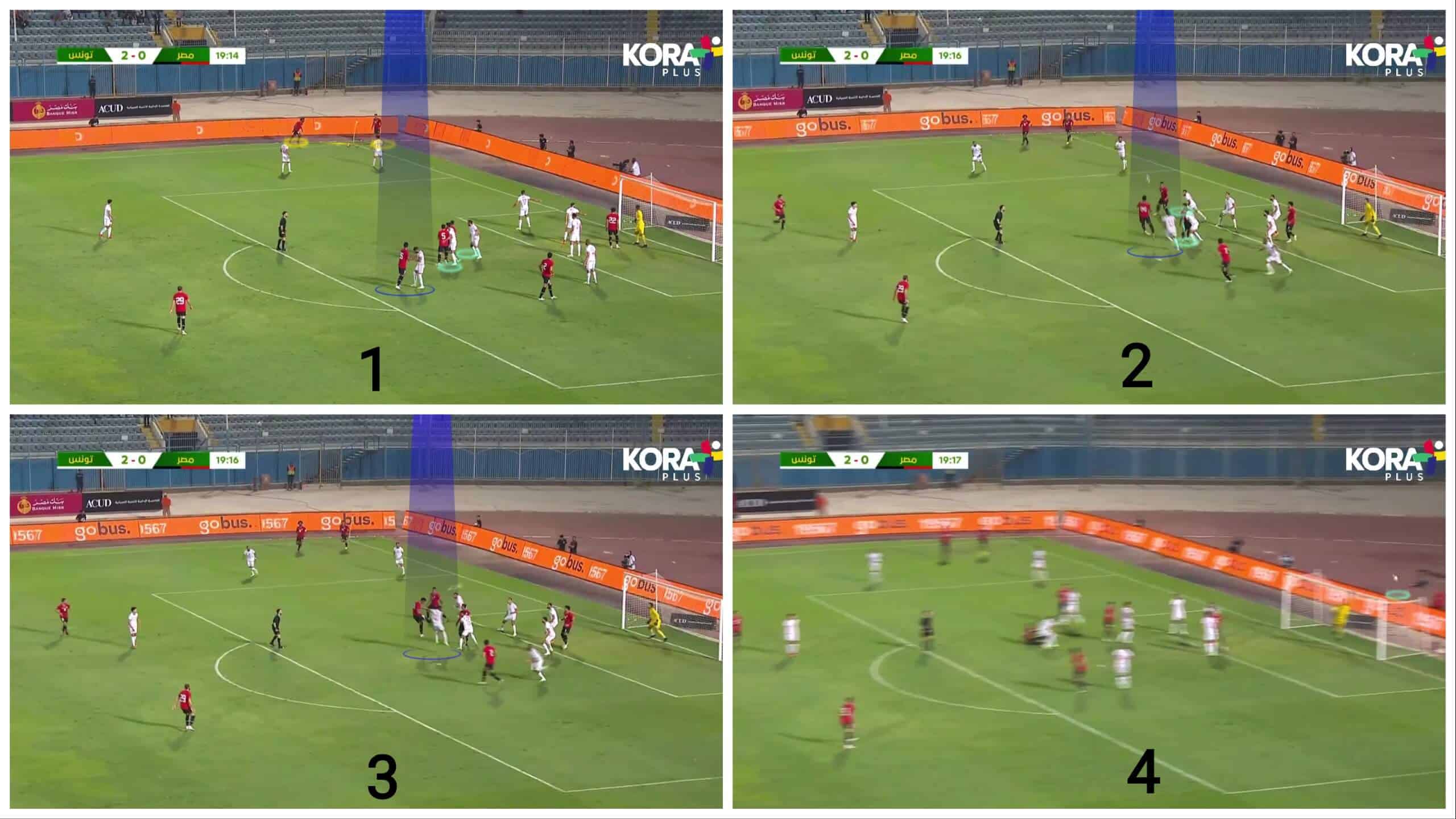
Short corners
We are still with the idea of the two takes, Salah and Zizo, but this time, we speak about their ability to pass to each other and then cross the ball from movement.
In the photo below, the opponent lets only one player against the short corner while one of the two zonal players has the ability to go to help him after the pass.
Hence, Mohamed Abdelmonem, in blue, targets this area left by the first zonal player.
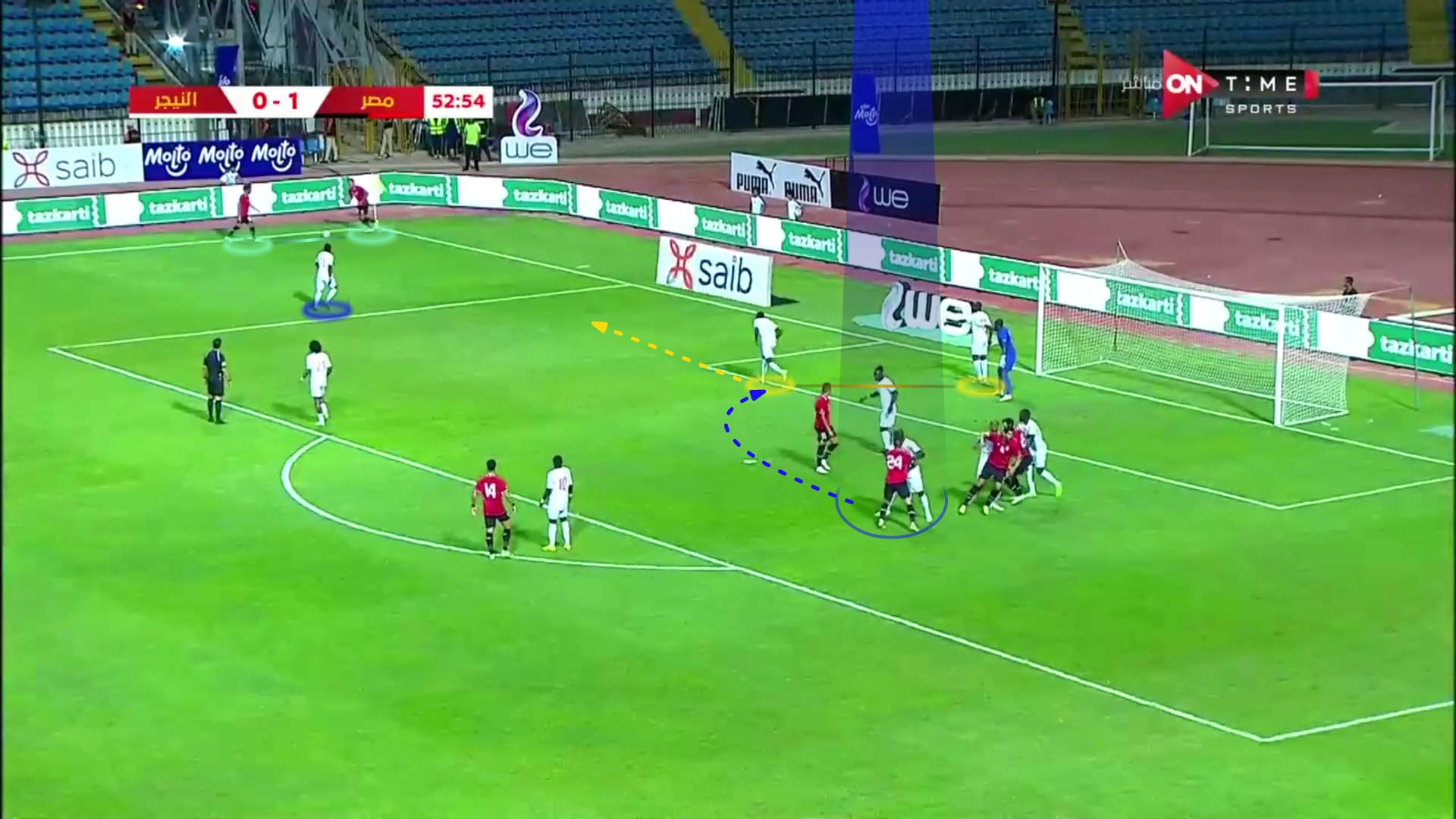
Mohamed Abdelmonem uses another trick: moving around one of his teammates to get to the targeted area a few seconds earlier than his marker, as shown below.
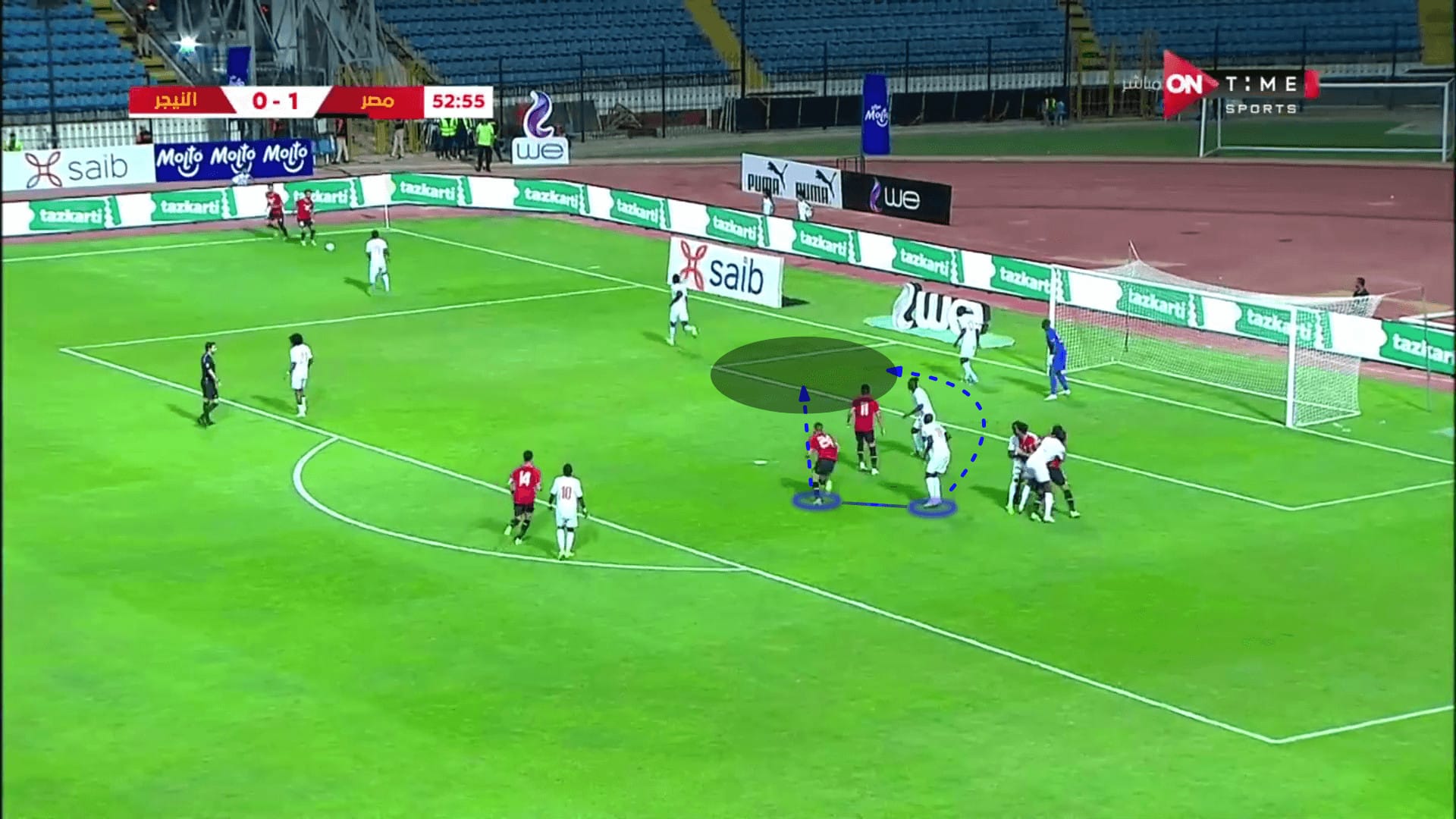
But the ball passes over his head, as shown below.
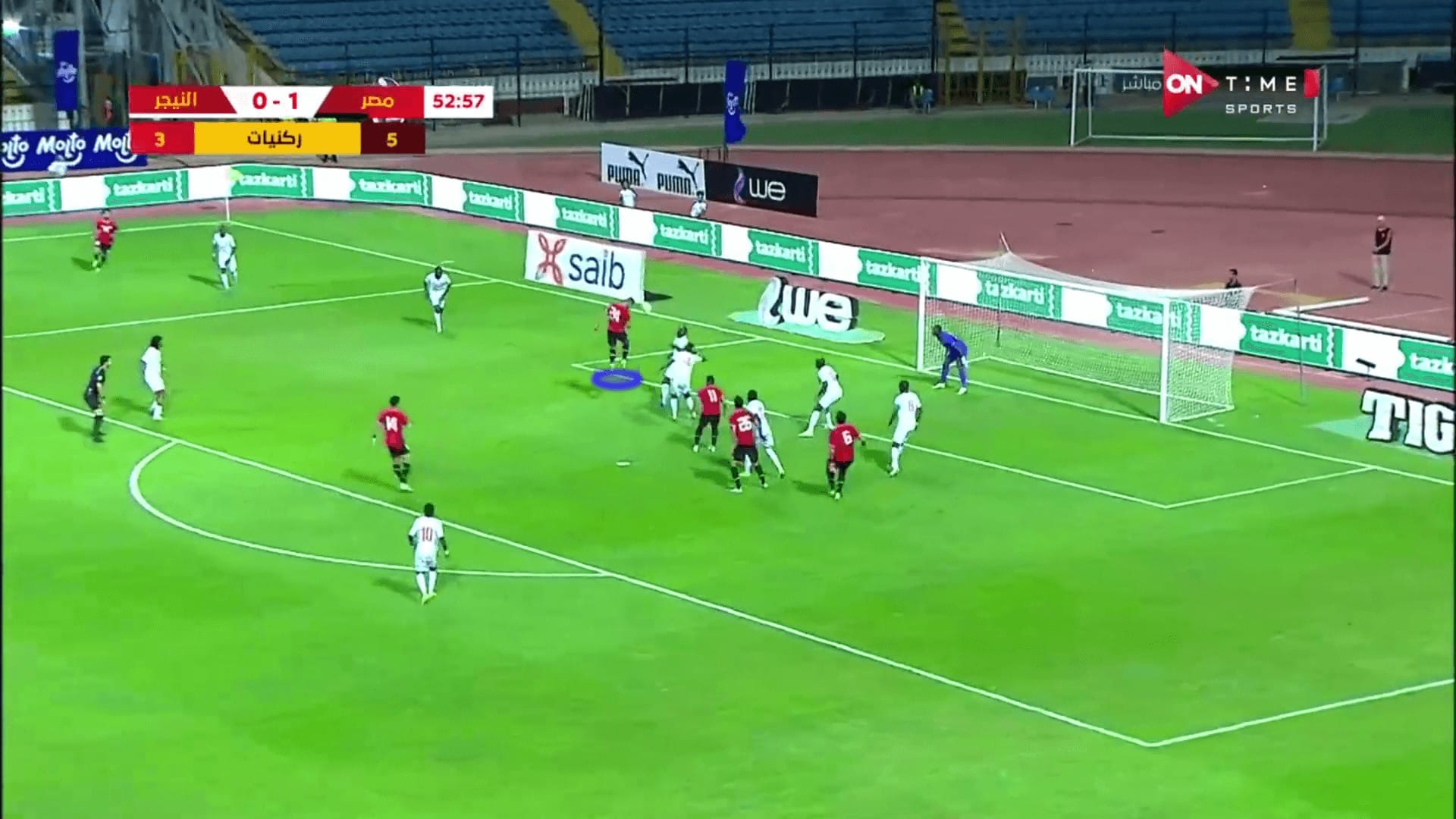
Egypt uses another trick in short corners when facing teams defending with two players and a player in the rebound zone: passing the ball directly in the half-space between them and performing an early cross.
At the same time, the defenders move up, as we will explain.
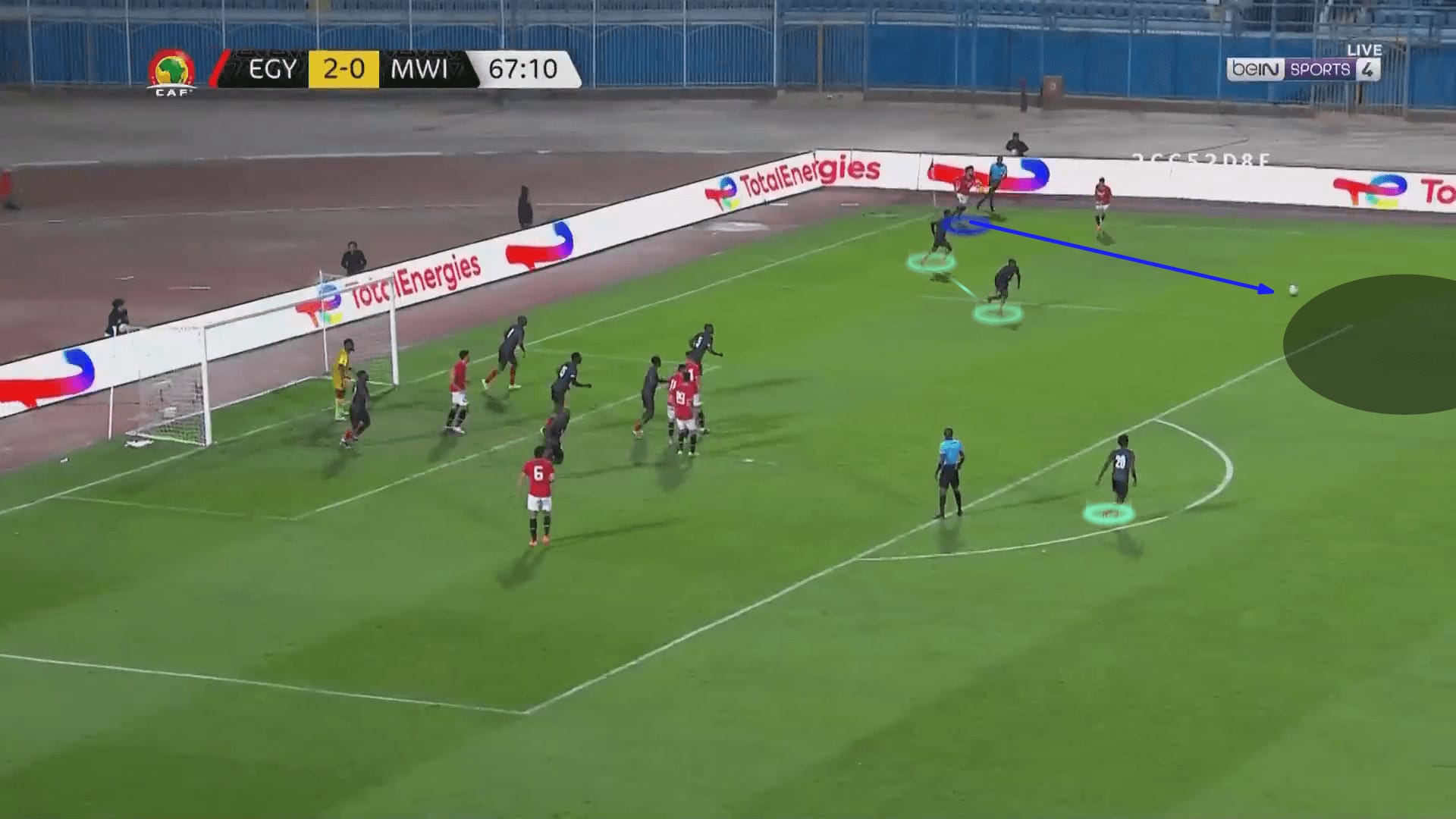
In the photo below, it is clear that Egypt tries to exploit the bad reorganising while defenders move up, so two defenders cover the off-side trap.
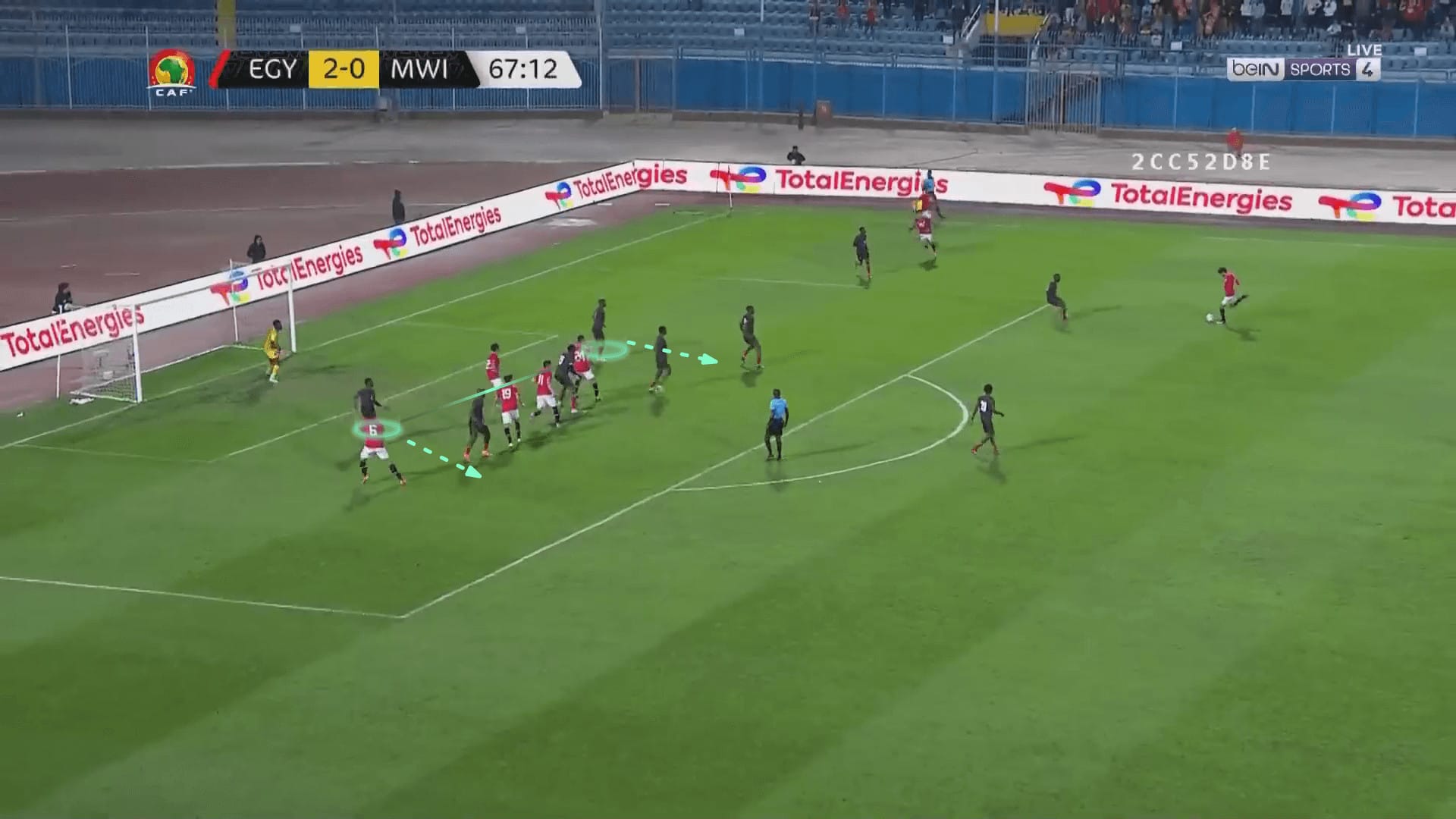
But the cross is a little short, so it goes in front of the defenders, not behind them, as shown below.
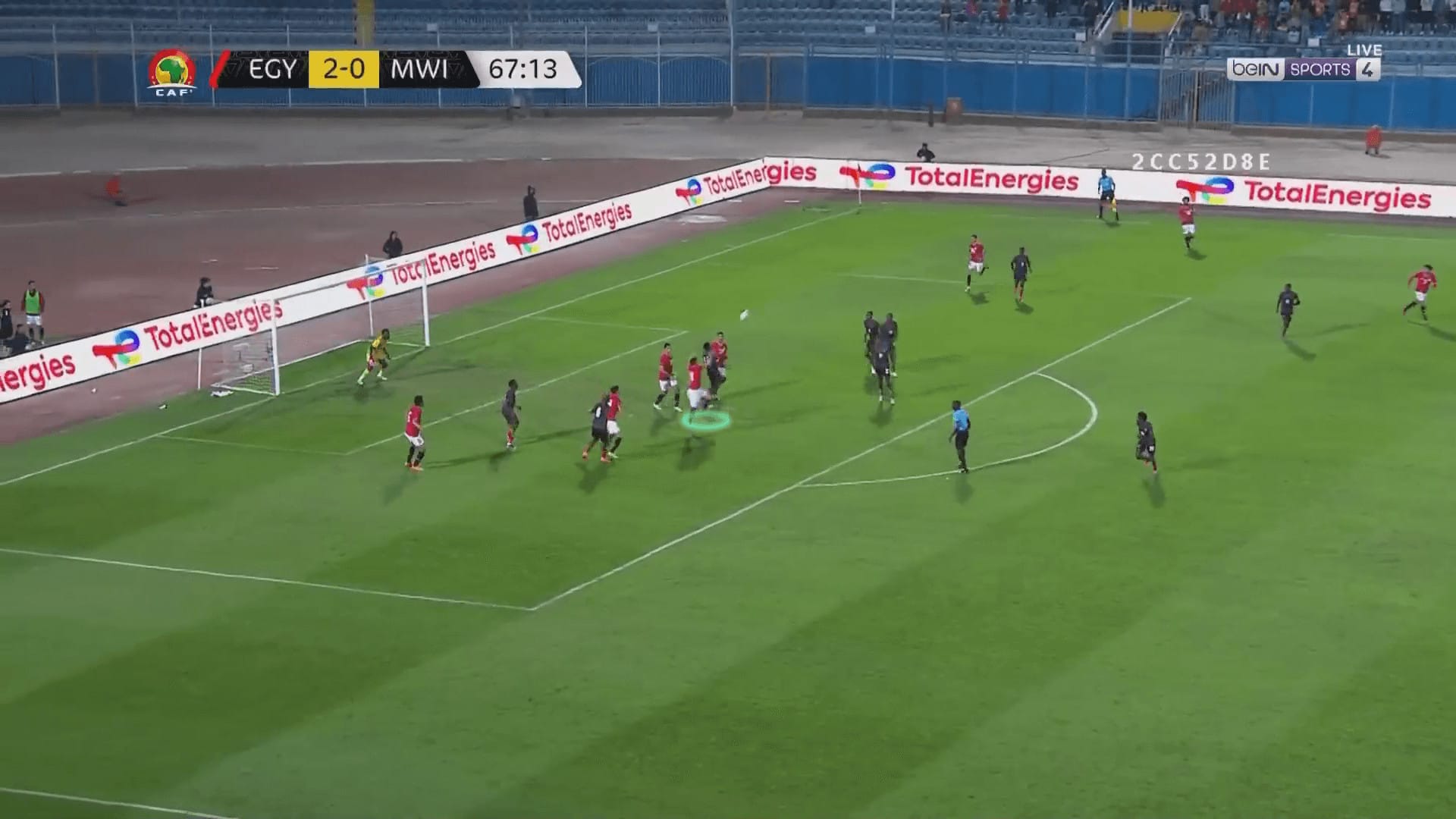
The opponents try to react to the previous idea, so they close the half-space, leaving the rebound zone free, as shown in the first photo.
Egypt easily targeted this area directly with an accurate pass from Zizo, the only taker in this case.
At the same time, the other attackers start moving late, then dragging the markers more inside the box, as shown in the second photo.
The rebound attacker gets the ball quickly, but the goalkeeper saves the shot, as shown in the third and fourth photos.
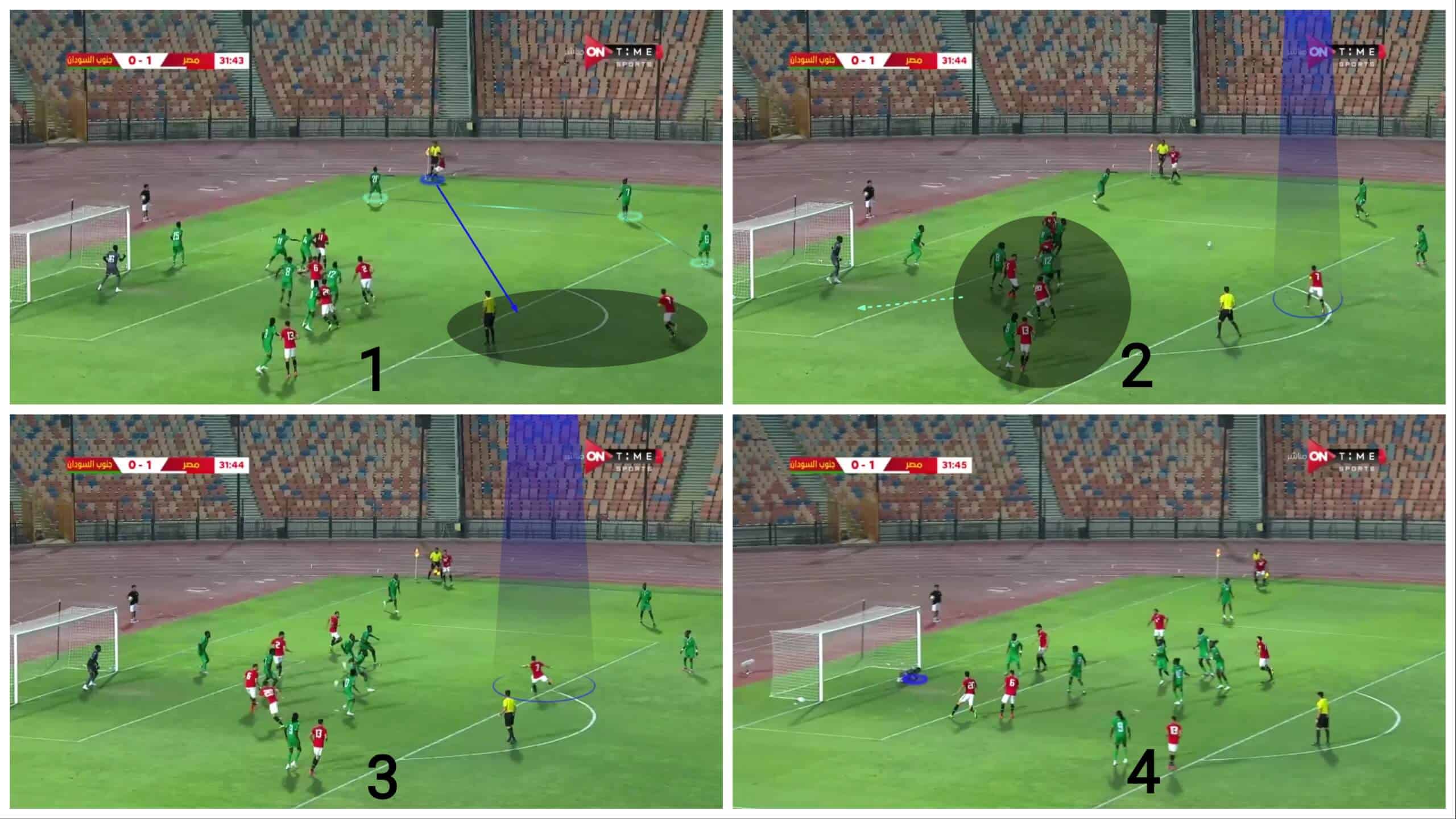
Mohamed Abdelmonem’s amazing ability to get the first touch
Mohamed Abdelmonem has a fantastic ability to escape from his marker, getting the first touch before the zonal defender in excellent timing and finish, as we will explain below.
In the first photo, Mohamed Abdelmonem stands behind his teammate in a small stack to earn a few seconds to reach the targeted area between the first two zonal players from his maker by avoiding the physical resistance with his marker, as in the second photo.
After that, he uses his pace to get to the targeted area earlier than his marker in good timing to get the ball before the zonal defender, as in the third photo, and the result is a goal, as shown in the fourth one.
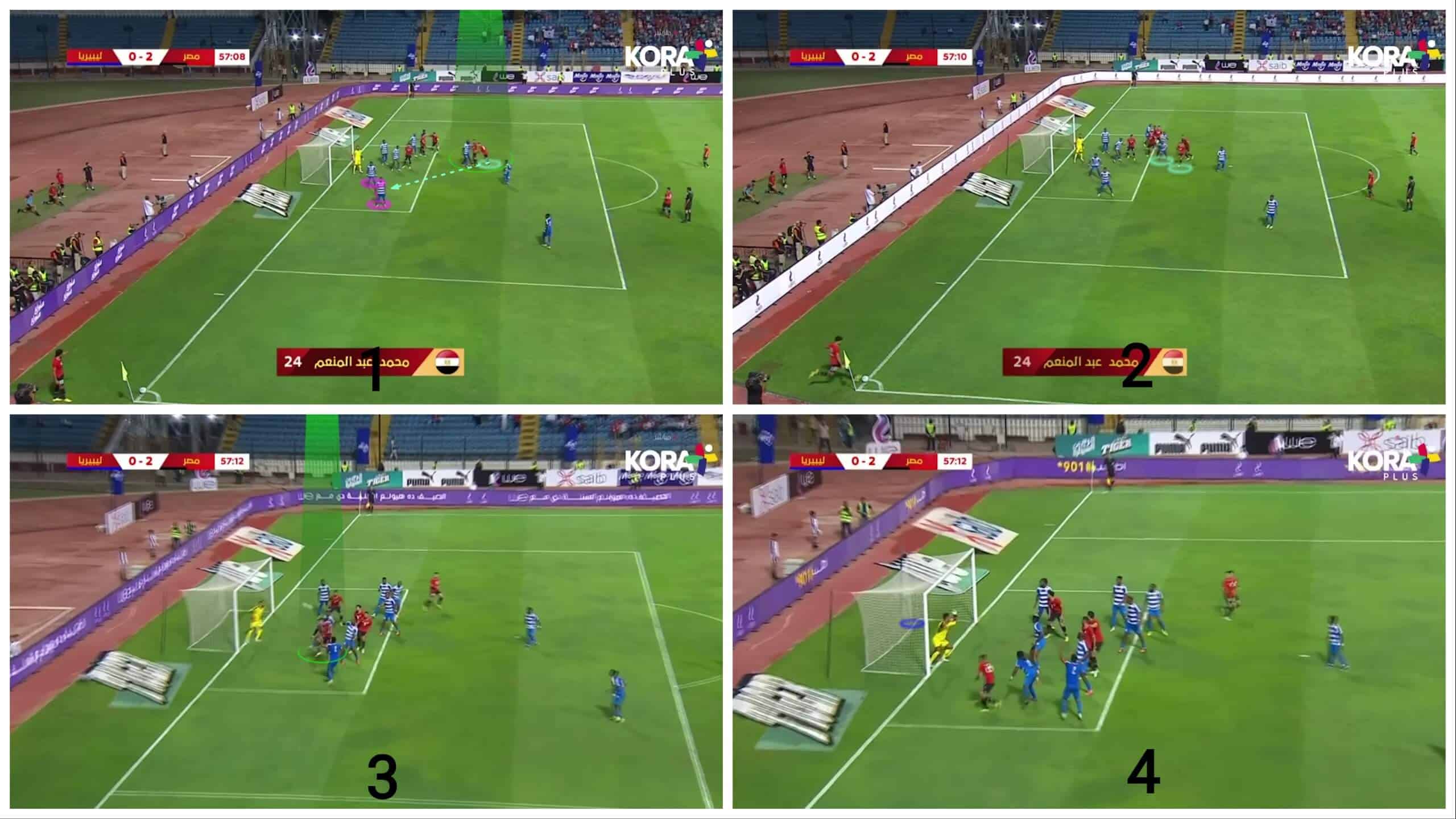
The case below shows another way Mohamed Abdelmonem uses feints to escape from his marker.
In the first photo, Mohamed Abdelmonem targets the area in front of the two zonal defenders on the near post.
He should first earn a few seconds to reach the targeted area before his marker by avoiding the physical touch by using a body feint toward the near post, as shown in the second photo.
In the third photo, there is another trick by moving around his teammate who stands in the path of Mohamed Abdelmonem’s marker, as shown in the fourth photo.
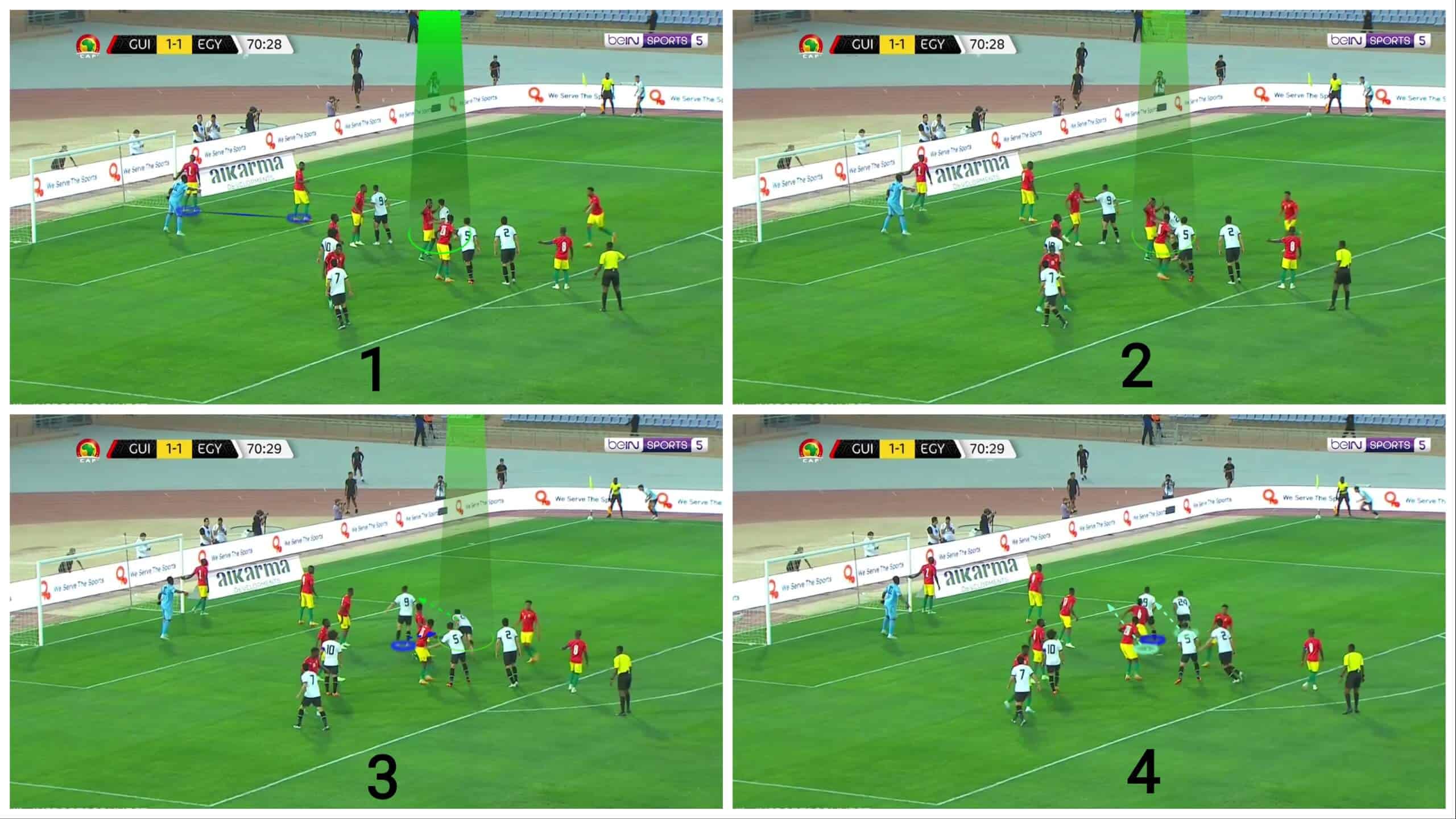
But the cross’s height is low, so he tries to shoot the ball by his leg, but he fails, as shown below.
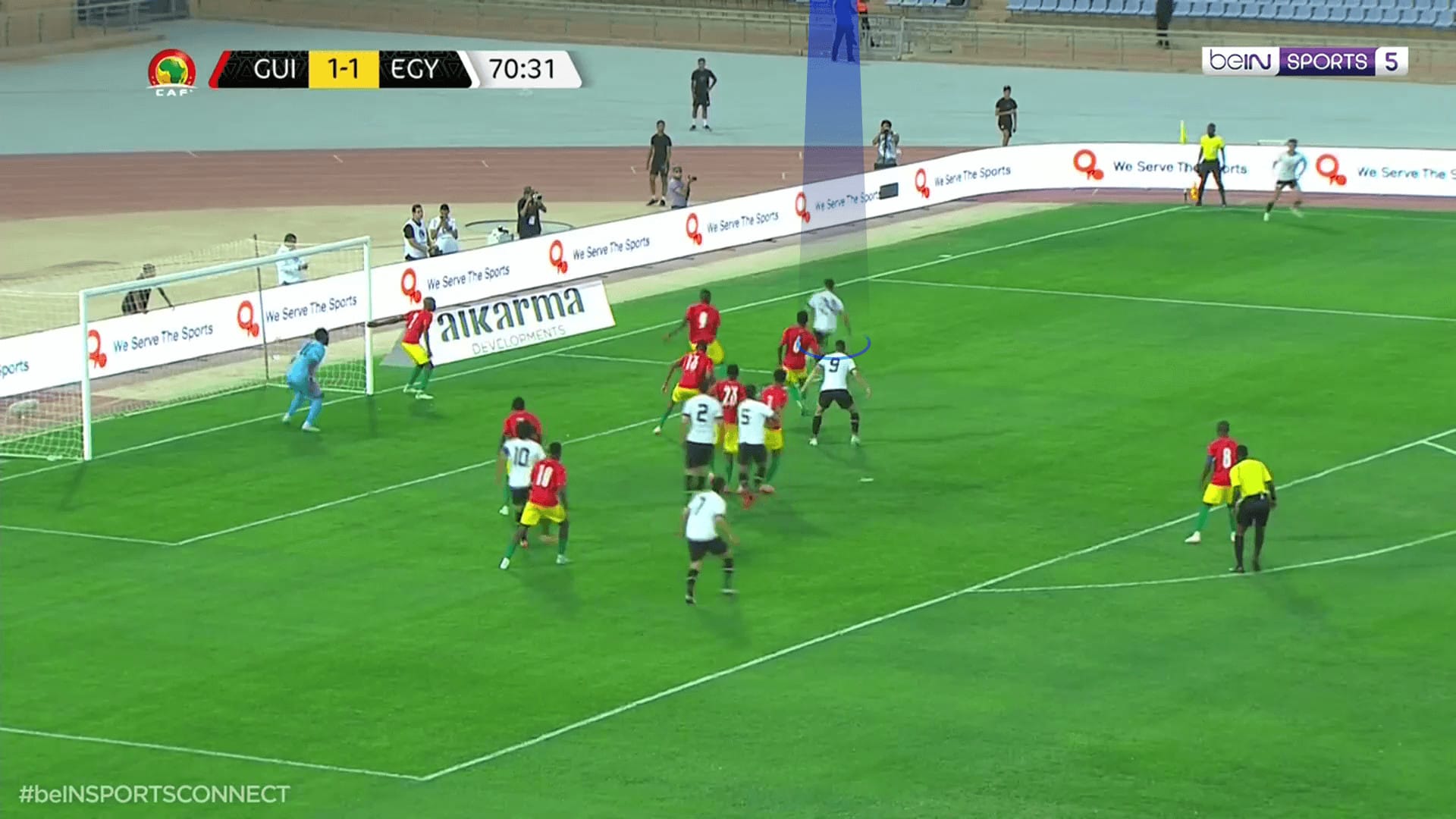
Conclusion
In this analysis, we have explained Egypt’s good tactics in corners and how they exploit Salah and Zizo to make the difference in corners because they often have two takers to play a corner, so opponents get confused because they can play an in-swinging or out-swinging cross in the same accuracy from the right or left side and if an opponent defends the box well, they pass a short corner to each other, knowing that they are both excellent, technically, at dribbles, passes and generally behaviour with the ball.
We also explain how they target Mohamed Abdelmonem on the near post because he can escape from his marker, measure the ball in the air, and finish excellently.
We have also discussed how the opponents deal with those tactics and how Egypt reacts to them, and we have suggested many ideas for making them more effective in corners.






Comments